There is a truly staggering number of insect species of which only a select few are regularly kept in captivity for their beauty, interesting behaviors, and Many insects have extremely specialized needs that can be incredibly intimidating for a beginner to the insect hobby and as such it can be difficult to know where to start when looking to keep pet insects. The insects below are well-known for their ease of care and are very well suited for beginners of all sorts.
Best Insects to Keep as Pets
Here are a few of our favorite types of insects to keep as pets. Scroll down through the rest of the article to read more about each insect, such as recommended species, care needs, maintenance, and more.
Cockroaches
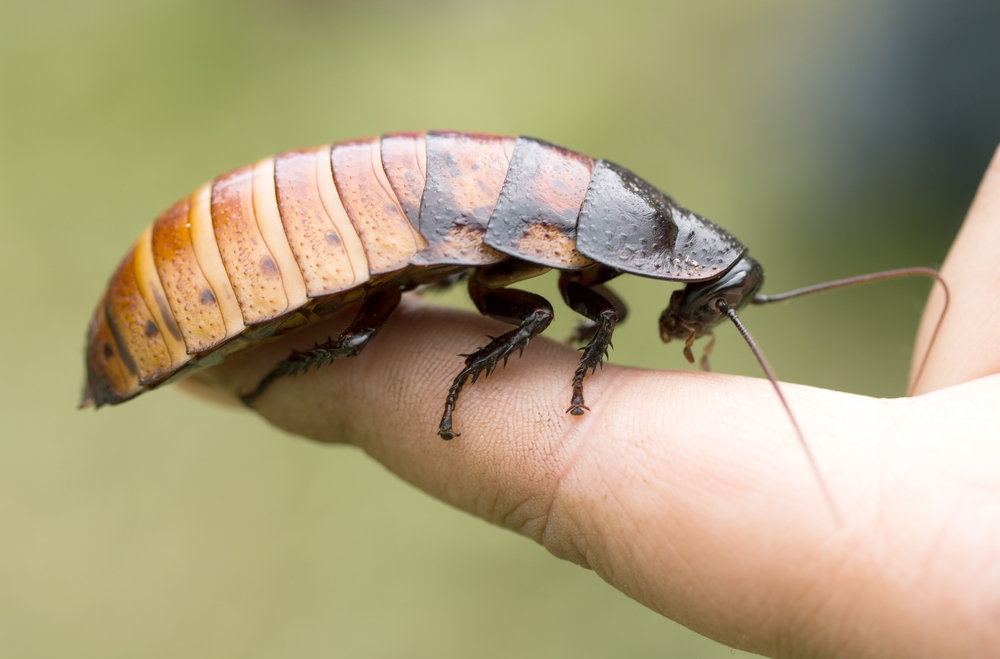
When you think of cockroaches some less-than-pleasant interactions might come to mind. Certain species of cockroaches are pernicious household pests that most of us have experienced. What many people do not know, however, is that there are thousands of species of cockroach and only a very tiny number of these are pests. There are many cockroaches that make excellent pets, be it for their beauty or interesting behaviors. They cannot bite or sting, do not smell, are very easy to feed, and many are very easy to handle.
Enclosure
Cockroaches can be kept in a variety of enclosures, anything from a jar to a terrarium. If you are keeping a colony you will need a larger enclosure with many places for the cockroaches to hide. This will encourage more breeding.
Feeding
Different cockroach species eat different things. Some cockroaches specialize on dead leaves or wood, but most are omnivores who eat a wide variety of foods. For most species of cockroaches a diet of dog food, fruit, and vegetables will work very well.
Humidity
Because there are thousands of species of cockroaches there will be a wide range of humidity requirements for different cockroach species. Cockroaches will drink directly from shallow water bowls as well as obtain water from their food. If you are keeping a tropical species of cockroach it is a good idea to mist the enclosure once a day or so.
Temperature
Tropical species of cockroach will need to be kept warm with a heat mat or lamp. Only cover one half of the enclosure at most to allow the cockroaches to regulate their own internal temperatures, and prevent direct access to heat lamps to prevent burns.
Breeding
When kept in groups, cockroaches will breed. They breed so quickly that many species are used as feeders. In order to breed your cockroaches keep them in groups, keep them well-fed, and maintain the proper temperature.
Ease of Care
Cockroaches are generally very easy to care for and are well suited to beginners. They also are not dangerous and cannot cause injury or harm to humans. Because the larger ones are so sturdy they can be handled without fear.
Recommended Beginner Species
- Gromphadorhina portentosa: Madagascar hissing cockroach
- Blaptica dubia: Dubia roach
- Blaberus giganteus: Giant cave cockroach
- Blaberus craniifer: Death’s head cockroach
Stick Insects
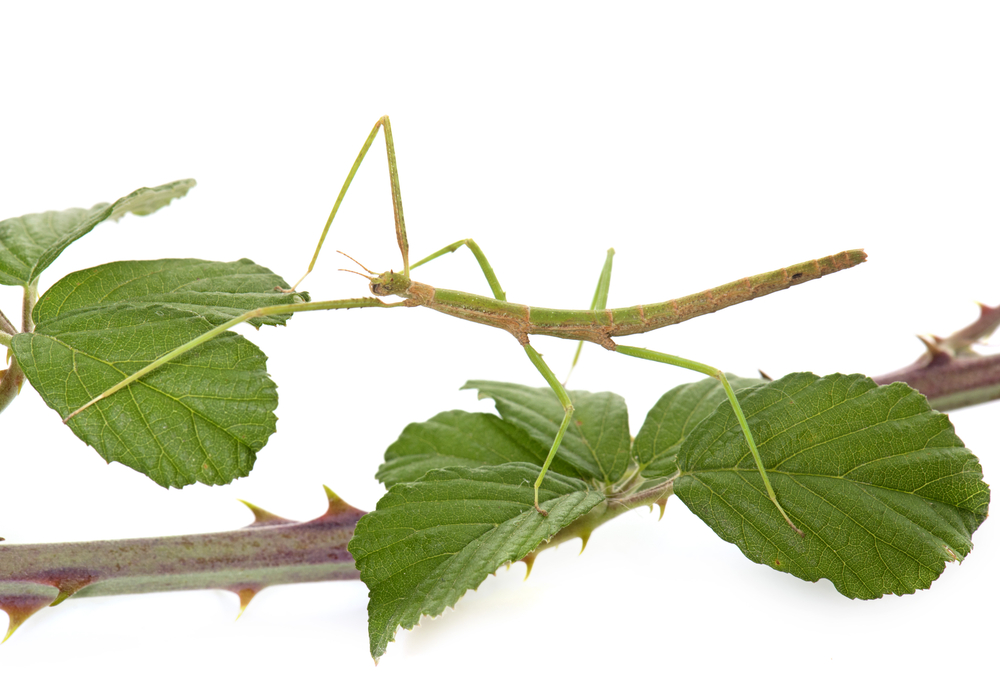
Stick insects make very interesting pets. They are herbivorous and as such very easy to feed provided you have access to the kinds of plants they like to eat. Though they are fragile and usually shouldn’t be over-handled, but cannot hurt you and are generally extremely peaceful. They make great pets for children and often display many interesting behaviors. They also tend to display very interesting coloration and body forms, as they evolved to blend in perfectly with the greenery they live in.
Enclosure
Stick insects will do well in an enclosure filled with the host plants they need to feed on and lots of vertical space. Netcages work very well, as well as very tall glass and acrylic tanks. Stick insects require a vertical space, as they tend to molt hanging upside-down.
Feeding
Stick insects are obligate herbivores, meaning that they must feed on plant material to survive. In addition to this they are very particular about the kinds of plants they will eat, with each species generally consuming the leaves of a few different species of plants. You will need to provide your stick insect with a steady supply of foliage taken from the proper host plant if you are to rear them successfully.
Humidity
Molting can be very dangerous for stick insects and as such you should try to keep the humidity in your stick insect enclosure at the proper level. This should be accomplished via misting or keeping a container of water in the tank, covered in some way to prevent drowning.
Temperature
Most commonly kept stick insects are tropical in origin. They will need supplemental heat in order to survive.
Breeding
The best way to breed stick insects is to simply keep them in a group. As long they are provided with enough space and plentiful food stick insects will breed freely, often breeding too quickly for the keeper to deal with. Make sure you keep something that eats stick insects if you plan on breeding your stick insects.
Ease of Care
Stick insects are fairly easy to care for and very easy to breed. They are physically very fragile, however, so avoid handling them unless necessary.
Recommended Beginner Species
- Carausius morosus: Indian stick insect
- Ramulus artemis: Vietnamese Stick Insect
- Heteropteryx dilatata: Jungle Nymph
- Phyllium philippinicum: Leaf insect
- Extatosoma tiaratum: Giant Prickly Stick Insect
Praying Mantises
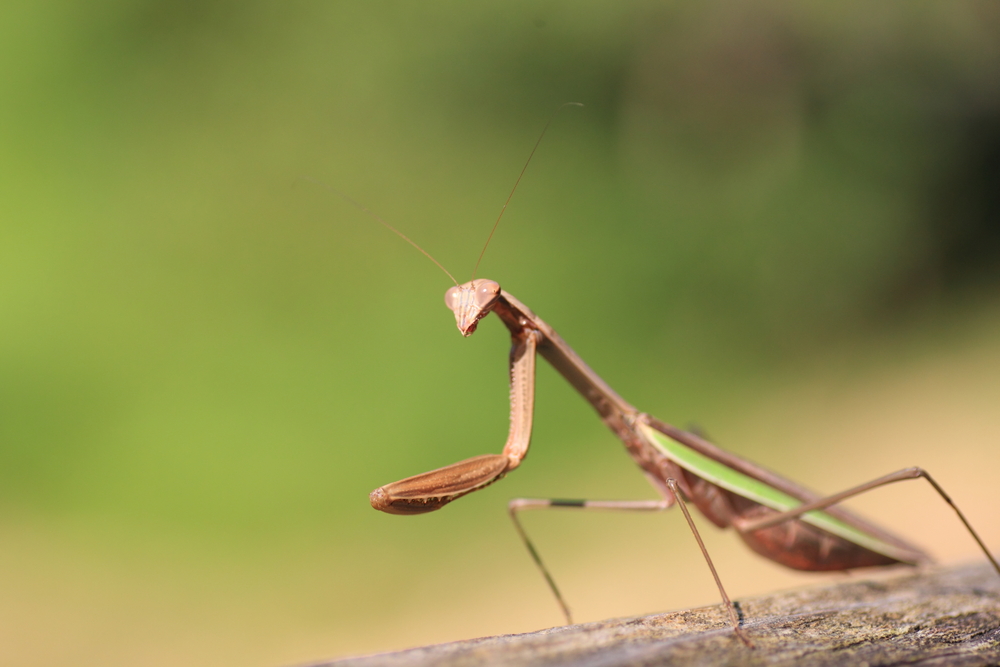
For those who want a pet that is a bit more involved, a mantis might fit the bill perfectly. Mantises are often very beautiful insects that are very well-known for using their impressive forelimbs to grab their insect prey. There are more than 2400 species and all are completely harmless, though they can cause a small scrape with their forelimbs. There are some mantis species that make excellent and hardy pets for the beginner provided a few conditions are met.
Enclosure
Praying mantises should be kept in a tall enclosure, usually a terrarium or netcage. Some species are small enough to keep singly in jars as well.
Feeding
Mantises require a diet of insects. Different sized mantises require different sources of food, with young mantises requiring small food such as fruit flies. Adults will eat crickets, cockroaches, and mealworms.
Humidity
In order to molt properly mantises will need to be kept in the proper humidity. Maintain humidity by misting the enclosure daily and keeping a small dish of pebbles and water at the bottom of the enclosure.
Temperature
Many of the most common mantises kept in the pet insect hobby are from tropical places and will need supplemental heating. Heating can be provided with a heating mat or a lamp. Be sure that your mantis does not have direct access to any heating equipment to avoid burns.
Breeding
Mantis breeding is complicated by their proclivity for cannibalism. Introductions must happen very carefully and males removed immediately after mating. In some communal species, however, mating can happen spontaneously as the mantises live together.
Ease of Care
Many mantises are challenging to take care of, but the species listed below will thrive for even the most inexperienced beginners. Do not handle mantises if you can help it, as it is easy for them to fall. This can be fatal, particularly in larger females.
Recommended Beginner Species
- Tenodera sinensis: Chinese Mantis
- Mantis religiosa: European mantis
- Hierodula membranacea: Giant Asian Mantis
- Stagmomantis carolina: Carolina mantis
Beetles
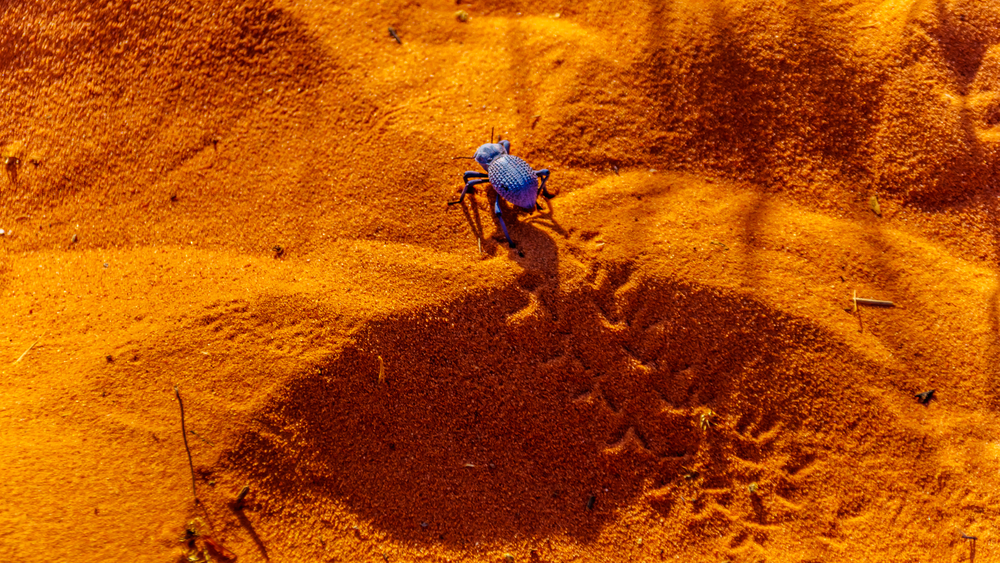
Beetles are the largest group of insect, with a dazzling array of species ranging from the truly tiny to the colossal. There are beetles that are carnivorous, herbivorous, and everything in between. Though only the mealworm and superworm are commonly kept in the hobby, there are actually many species of beetles whose ease of care and peaceful disposition make them excellent pets for beginners.
Enclosure
Beetles can inhabit a variety of enclosures, from a shoe box to a terrarium. Most beetles available to hobbyists can be kept in colonies in a glass terrarium.
Feeding
Because beetles have very different larval and adult stages, if you want to breed your beetles you may need to use two separate food sources. Tenebrionid beetles, like the common mealworm, will feed on starchy material like oats, potatoes, or wheat. Scarab larvae feed on a variety of things, some of them needing nothing more than rotting wood or compost. The adults usually feed happily on fruit.
Humidity
Humidity is critical for the larval stages of beetles. Maintain humidity by keeping the substrate moist. You can mist the substrate each day. Larvae will generally not use water dishes, so maintaining moisture levels is critical.
Temperature
It is important that proper temperature is maintained for larval development. Tropical beetles will need supplemental heat via a heat pad or lamp.
Breeding
Most commonly-kept species of beetles can be bred successfully in captivity. Many beetle species will breed freely when kept in colonies.
Ease of Care
Many species of beetles are incredibly hardy and easy to take care of. Many are very sturdy and well-suited for regular handling.
Recommended Beginner Species
- Asbolus verrucosus: Blue death feigning beetle
- Tenebrio molitor: Mealworm
- Gymnetis thula: Harlequin flower beetle
Assassin Bugs
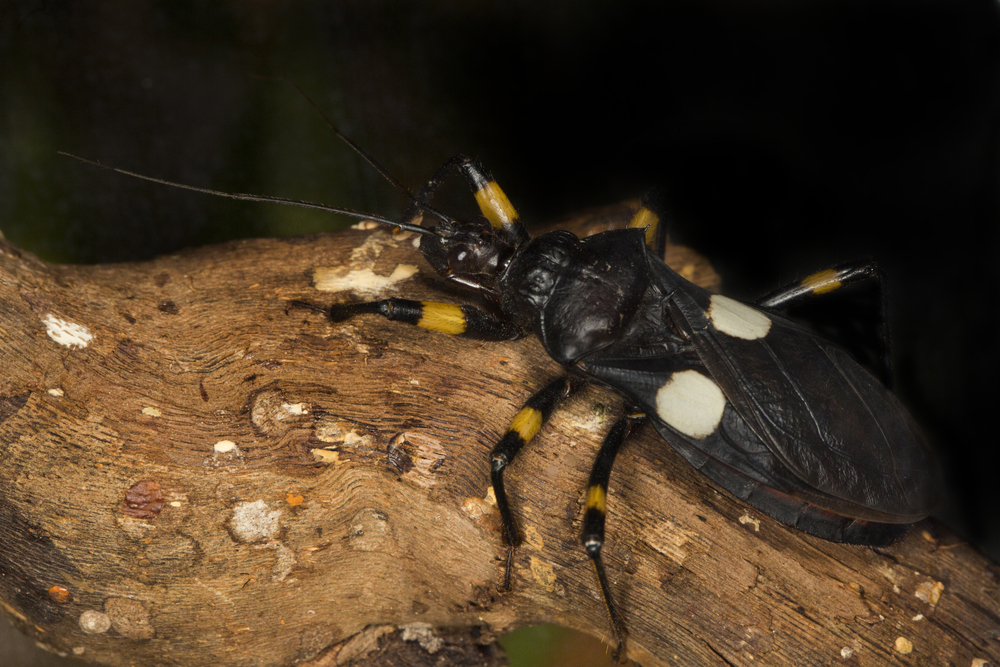
Assassin bugs are not for the faint of heart. They are large and deliver a powerful and venomous bite that is reported as being quite painful, though not terribly dangerous to humans. They are an excellent insect for beginner insect keepers, however, who want a more intense experience. They are often very beautiful insects, with wild coloration and interesting patterns, that also display a wide variety of fascinating behaviors.
Enclosure
Assassin bugs can be kept in any kind of container that keeps them from escaping. Probably the best is a standard glass aquarium with a screen lid. Vaseline can be smeared in a band under the lid to prevent escaping, though assassin bugs are not reported as being eager to escape.
Feeding
Assassin bugs are voracious predators and can be a fed a variety of invertebrates as food. Perhaps the most common are crickets and roaches. If you are breeding assassin bugs, you will need to offer different sizes of food in order to accommodate the needs of the often very small nymphs.
Humidity
The most commonly kept species of assassin bug tend to prefer moderate humidity, but each species varies so be sure to do your research. You can maintain humidity through misting and offering a water bowl filled with small stones. The Horrid King assassin bug tends to prefer dry conditions, so do not mist often. Providing water should be enough, as assassin bugs get most of their water from their food.
Temperature
Many commonly-kept assassin bugs are from tropical regions and thus need supplemental heating. You can use heating mats or heating pads to keep your assassin bugs warm.
Breeding
Many assassin bugs are not cannibalistic and can be kept in large colonies. In these colonies breeding will happen naturally. The females will lay eggs in the substrate which hatch directly into nymphs that resemble the adults and will begin feeding on small insects from the day they hatch.
Ease of Care
These are hardy and interesting creatures that, though not common in the hobby, are very easy to care for and breed freely.
Recommended Beginner Species
- Platymeris biguttatus: Two Spotted Assassin Bug
- Platymeris rhadamanthus: Red Spotted Assassin Bug
- Psytalla horrida: Horrid King Assassin Bug
Crickets, Grasshoppers, & Katydids
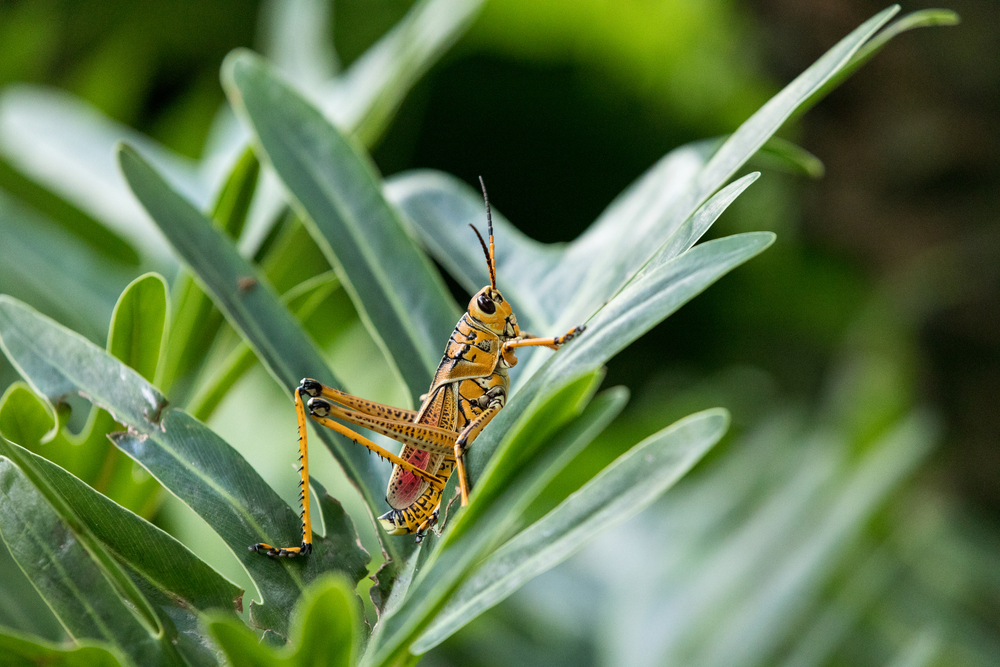
These interesting insects are all members of the Orthoptera. There are many species in this group but only a handful are regularly kept in captivity, mostly as feeders. There are many much larger species, however, that make interesting and easily kept pets.
Enclosure
Orthopterans can be kept in most containers provided they are large enough. They are very active insects and as such will need a larger container than most other insects. A large rubbermaid tub will work, as will glass terrariums.
Feeding
Orthopterans feed on a variety of food. Most prefer to consume vegetable matter and as such you will need to provide them with a constant supply of vegetables and fruit. Many crickets will also consume
Humidity
Different species of orthopteran require different levels of humidity. Most will be happy with a humidity level around 50% to encourage proper molting. Excessive humidity will promote mold, but low humidity can cause molting problems. Maintain humidity by misting and be sure to offer water in a dish filled with pebbles to allow your pets to drink.
Temperature
Grasshoppers will enjoy access to a basking spot, which can be provided by aiming a heat lamp onto a rock or stick. Crickets and katydids are nocturnal, however, and will not bask. Most commonly kept species do not need supplemental heating.
Breeding
Breeding your orthoperans will require you to provide specific conditions for each species. Many orthopteran females have a long organ called an ovipositor, which they use to deposit their eggs into a substrate of some sort. You will need to provide them with a damp dish of a suitable medium in which to lay their eggs. Sand or coco coir will work for many species.
Ease of Care
Most species of orthopterans are easy to take care of, but only a few are easy to breed.
Recommended Beginner Species
- Romalea microptera: Easter lubber grasshopper
Bees

Bees are perhaps the earliest of all pet insects, with the honey bee being associated with humans for thousands of years. Humans have kept bees for the sweet honey and useful wax they produce as well as the pollination services they can offer to our crops. The honeybee is the most commonly kept bee, but bees comprise of very large group of insects that come in a wide variety of forms and perform a variety of behaviors.
Enclosure
Bees will need to be kept outdoors in a hive. There are two kinds of hives usually used by beekeepers:
- Langstroth hive
- Top-bar hive
Feeding
Bees need to be kept free-range. They visit flowers for their nectar and pollen, which they bring back to the hive and store as honey. If your bees are having trouble storing enough honey, are weak, or if winters are long and cold, your bees will appreciate supplemental feeding. You can feed bees sugar water or sugar ‘cakes.’
Humidity
Bees do an excellent job of keeping their hives at the correct humidity. All you need to do it offer a water source. A birdbath, pond, or dish of water will do fine.
Temperature
Bees will regulate the temperature of the hive themselves. Honeybee colonies can survive extremely low temperatures, well into the negatives. On hot days they will even use water in their hives as a form of air conditioning, fanning it with their wings to create an evaporative cooling effect.
Breeding
Honeybee breeding is done by the queen, who lays the eggs and rears the young. Colonies will break apart when new queens are born, forming a swarm. Swarms will leave the mother hive and can be used to start new hives.
Ease of Care
Keeping bees of any species requires a great deal of study and expertise as well as a significant investment in equipment. Bees do, however, take care of themselves to a large degree. As such, bees are not considered a difficult insect to keep provided you do the research.
Recommended Beginner Species
The primary species of bee kept by humans is the Western Honeybee, Apis mellifera. It is possible to keep other species, however, such as mason bees or stingless bees. This will depend a lot on your location, however, as most bees are not legal to bring to places they are not native to.
